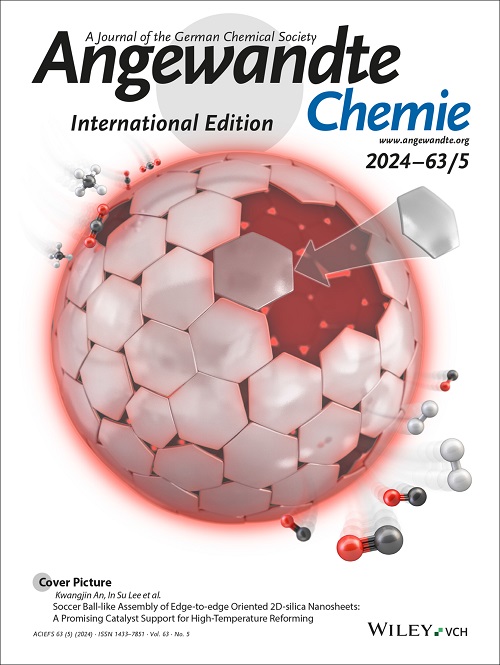Metal-Free Wet Chemistry for the Fast Gram-Scale Synthesis of γ-Graphyne and its Derivatives
IF 16.1
1区 化学
Q1 CHEMISTRY, MULTIDISCIPLINARY
引用次数: 0
Abstract
γ-Graphyne (GY), an emerging carbon allotrope, is envisioned to offer various alluring properties and broad applicability. While significant progress has been made in the synthesis of GY over recent decades, its widespread application hinges on developing efficient, scalable, and accessible synthetic methods for the production of GY and its derivatives. Here we report a facile metal-free nucleophilic crosslinking method using wet chemistry for fast gram-scale production of GY and its derivatives. This synthesis method involves the aromatic nucleophilic substitution reactions between fluoro-(hetero)arenes and alkynyl silanes in the presence of a catalytic amount of tetrabutylammonium fluoride, where the fluoride plays a crucial role in removing protective groups from alkynyl silanes and generating reactive alkynylides. Our comprehensive analysis of the as-prepared GY reveals a layered structure, characterized by the presence of the C(sp)-C(sp2) bond. The synthetic strategy shows remarkable tolerance to various functional groups and enables the preparation of diverse F-/N-rich GY derivatives, using electron-deficient fluoro-substituted (hetero)arenes as precursors. The feasibility of producing GY and derivatives from fluorinated (hetero)arenes through the metal-free, scalable, and cost-effective approach paves the way for broad applications of GY and may inspire the development of new carbon materials.用于快速合成γ-石墨烯及其衍生物的无金属湿化学法
γ-石墨烯(GY)是一种新兴的碳同素异形体,具有各种诱人的特性和广泛的应用前景。近几十年来,GY 的合成取得了重大进展,但其广泛应用取决于能否开发出高效、可扩展、易获得的合成方法来生产 GY 及其衍生物。在此,我们报告了一种利用湿化学快速生产克级规模的 GY 及其衍生物的简便无金属亲核交联方法。这种合成方法涉及氟(杂)烷与炔基硅烷在催化量的四丁基氟化铵存在下发生的芳香亲核取代反应,其中氟化铵在去除炔基硅烷上的保护基团并生成活性炔基方面起着至关重要的作用。我们对制备的 GY 进行了全面分析,发现它具有层状结构,其特点是存在 C(sp)-C(sp2) 键。该合成策略对各种官能团具有显著的耐受性,并能以缺电子的氟代(杂)炔为前体,制备出多种富含 F-/N 的 GY 衍生物。通过这种无金属、可扩展和具有成本效益的方法从氟化(杂)烷制备 GY 及其衍生物的可行性,为 GY 的广泛应用铺平了道路,并可能激发新型碳材料的开发。
本文章由计算机程序翻译,如有差异,请以英文原文为准。
求助全文
约1分钟内获得全文
求助全文
来源期刊
CiteScore
26.60
自引率
6.60%
发文量
3549
审稿时长
1.5 months
期刊介绍:
Angewandte Chemie, a journal of the German Chemical Society (GDCh), maintains a leading position among scholarly journals in general chemistry with an impressive Impact Factor of 16.6 (2022 Journal Citation Reports, Clarivate, 2023). Published weekly in a reader-friendly format, it features new articles almost every day. Established in 1887, Angewandte Chemie is a prominent chemistry journal, offering a dynamic blend of Review-type articles, Highlights, Communications, and Research Articles on a weekly basis, making it unique in the field.

 求助内容:
求助内容: 应助结果提醒方式:
应助结果提醒方式:


